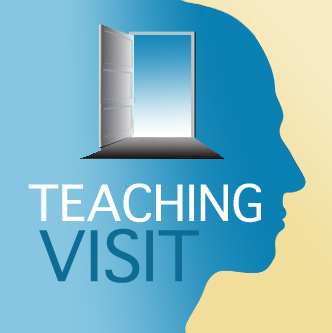CFT Teaching Visit Instruction Sheet

The Teaching Visits program is intended to be an occasion to support pedagogical community at Vanderbilt, and to encourage intentionality and reflection on teaching choices and contexts. These observations are not intended as critiques of teachers, nor are they meant to be a way for teachers to gather feedback about their performance. Instead, these classroom observations provide an opportunity for real-world observations about the pedagogical choices we make as teachers. Teaching, rather than class content, should be the focus of the observation.
Visitors, please observe the following guidelines
- Please arrive 5-10 minutes early for the class so as to be as unobtrusive as possible.
- Please sit in the back so as to not disrupt the classroom seating or conversation.
- Please turn off or mute all cell phones and laptops.
- Please do not participate in the classroom discussion unless directed to do so by the teacher.
- Many teachers choose to explain briefly the observers’ presence, but this is not required.
- If the teacher asks you to leave the room for any reason, please do so.
Different ways to observe
Observe the teaching context
- How many students are in the class?
- What level are the students, or other characteristics of the learners?
- What are the goals of the course, as far as you know?
- How is the classroom arranged and how does this influence teaching and learning in this space/time?
Observe the teacher’s techniques
- What has the teacher done to prepare, as far as you can observe?
- How does the teacher discuss learning goals or process?
- How does the instructor use content expertise? (selection of relevant knowledge, citations, context, divergent views, etc.)
- How is the class organized and paced?
- What methods of engagement are used?
- How are the elements of presentation you observe? (voice, intonation, clarity, non-verbal cues like eye contact, active listening, humor, etc.)
- What types of questions does the teacher ask, and when?
- How does the teacher use classroom media? (boards, overheads, slides, etc.)
- How does the teacher motivate students, and how do they respond?
- Is the teacher responsive to student questions, needs?
- How does the teacher summarize or transition from subject to subject?
What are the teacher-student interactions?
- What identities might the teacher and students share or not have in common? How might these affect classroom interactions?
- How are students engaged? (active or passive listening, speaking, writing, note-taking, disengaged, etc.)
- Map the conversation patterns. (Student-student? Student-teacher? Many or few voices?)
- Does student behavior change throughout the class period?
- What sorts of concerns or questions do the students seem to have?
- What is the affective dimension to the room? (curious, reflective, elevated, sad, agitated, etc.)
- What kinds of assessment are occurring? (discussion prompts, writing, reflection on process, quizzes, exams, etc.)
